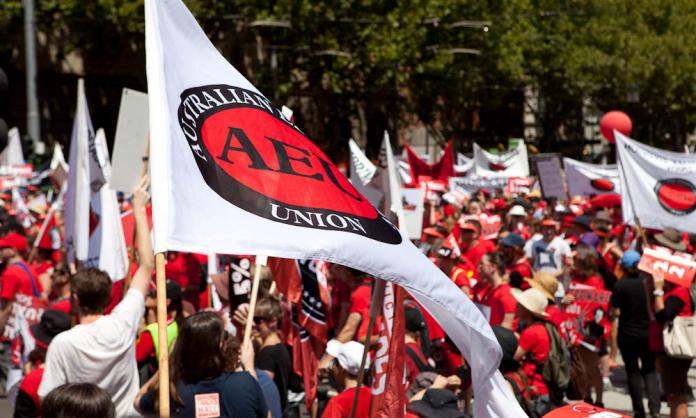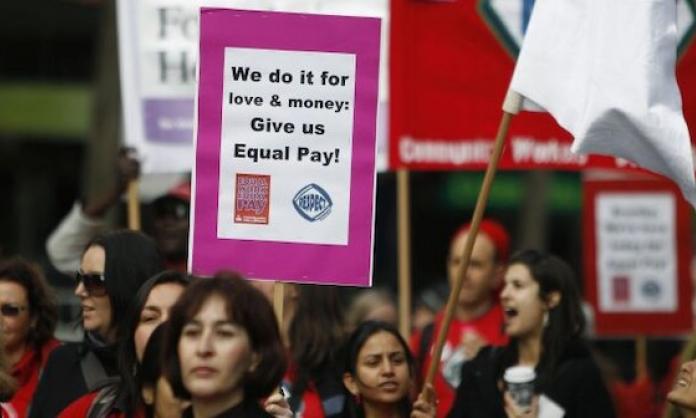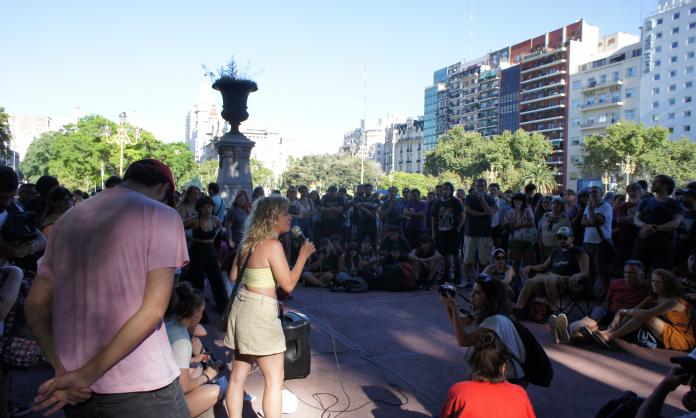Two years into a pandemic which has greatly increased the workload and stress of school staff, the Australian Education Union and the Victorian Government have reached an agreement that will most likely mean a pay cut for teachers in real terms.
Australia’s billionaires have doubled their wealth during the COVID-19 pandemic, while teachers and other front line workers have worked long hours, many unpaid, to keep education and other services going. Yet Victorian teachers are being asked to accept a headline pay rise of just 1 percent every six months under the new Victorian Government Schools Agreement, announced on 4 February 2022.
Inflation in Australia rose to 3.5 percent last year as the price of petrol and housing jumped. Comparable economies are also seeing a sharp increase in inflation—it’s currently at 5.4 percent in the UK and 7 percent in the US.
The proposed agreement includes a new annual “position allowance” of 1 percent of salary, and includes a one-off classification restructure worth 0.95 percent for most teachers. Even taking these payments into account, Victorian teachers will see their pay go backwards in real terms if inflation continues at the current rate—and will be locked into a four-year deal, even if inflation picks up from here.
The pandemic has taken a toll on Victorian teachers, who have had to juggle between remote learning and unsafe classrooms, which have caused some of the most significant COVID-19 outbreaks in the state. As a result, many teachers have left the profession, leading to unprecedented staff shortages. There are more than 600 teaching and 500 educational support staff job listings on the Department of Education and Training website, while the shortage of casual relief teachers experienced last year continues. This situation will likely get worse as COVID-19 continues to spread through schools.
The solutions offered by the Department have been woefully inadequate—calling for retired and inactive teachers to return to work to pick up the slack, and drawing up a new operations guide directing teachers to cover shortages by teaching students en masse in school gymnasiums. It is a recipe for disaster. The concentration of classes in gyms risks further spread of the virus. And the idea that this will help repair the educational damage caused by prolonged school closures is laughable.
The renewal of the agreement should be an opportunity to improve working conditions and prevent a further exodus of staff. The initial log of claims from the union was commendable. Most notably, it included a reduction in face-to-face teaching by 2 and 4.5 hours a week for secondary and primary teachers respectively. It further aimed to reduce workloads via a class cap of 20 students. Another important claim was for each school to be funded at a level which would allow the conditions in the agreement to actually be delivered. Too often, staff are told that “there’s no money in the budget” at a school level to relieve pressure on workloads.
The union was also pushing for a significant increase in the salaries of education support staff (ES). These workers provide essential support for students with disabilities, as well as administration and other roles. Most education support staff are currently stuck on the lowest pay point—with an annual salary starting at $47,672 per year, just over half of average full-time earnings in Australia. In practice, many are paid even less due to shorter working hours. For teaching staff, the log of claims was asking for a real pay rise above inflation. If the new agreement had included the union’s claims, it would have been an important step towards making teaching more manageable.
Unfortunately however, changes in the proposed agreement fall well short of the log of claims and will do little to address the appalling conditions that are driving teachers to leave the profession. The claim for funding at a level that enables the VGSA to be implemented has disappeared without a trace. The union is trumpeting the reduction in teaching hours, emphasising that it is the first time in 30 years that such a condition has been won, but the reduction is less than what teachers hoped for—just 1.5 hours per week for all teachers which will be phased in over two years. And three out of the four “professional practice days” introduced in the 2017 agreement to ease workloads will be scrapped, which will take even more off the shine from the reduced hours of weekly classroom teaching. The other claim that would have reduced workloads—a reduction in class sizes—was abandoned altogether.
A further problem is that the reduction in hours that has been agreed on is not written into the new agreement, but outlined in a separate deed which expires in 2027. Though the deed commits the government to using the reduced hours of work as “a starting point” for negotiations in the next agreement, what matters in a negotiation is not the “starting point” but the end point. So the deed is a weaker level of protection for crucial conditions like hours, compared to having it written into the agreement itself. This is especially the case if the government decides that the state budget needs “repair” in the meantime.
Several other important conditions are also included in the side commitments between the union and the Department, rather than in the agreement itself. One is the annual conversion of fixed term staff to ongoing roles—the subject of a side agreement to the 2017 enterprise agreement—which will remain outside the new agreement. Another side agreement stipulates that the Department “undertakes to consult” on a notorious clause of the VGSA which allows schools to employ fixed term staff (rather than ongoing) for “any other reason considered appropriate by the Employer”. The Department has made similar side commitments regarding the conditions of school council employees and on the provision of laptops to educational support staff.
The deed governing hours of face-to-face teaching looks to be enforceable (though it would require a case in the Victorian Supreme Court, not the familiar process through the VGSA disputes process leading to Fair Work). However the legal status of these other “commitments” is less than clear—they certainly don’t seem to be enforceable, which means a change in government, or government policy, could put all of these conditions in jeopardy.
For staff salaries, the proposed agreement would transfer most educational support staff to a higher classification (range 2). For the very lowest paid ES workers, this would give an immediate pay rise of $5,101, or around 10 percent. Before we start gushing though, remember that if inflation of 3.5 percent, this will mean prices rising by nearly 15 percent over the next four years. And educational support staff, along with everyone else, last received a pay rise (of just 1.75 percent) in October 2020. Lunch breaks (which educational support staff are often forced to work through) remain unpaid, leaving an important part of the ES claim unfulfilled. And the wording on progression—which usually gives an annual increment for teachers but not for ES—is unchanged. In summary, this is no great breakthrough on ES pay.
The extra salt on the wound is the proposed teachers’ salaries, a dismal 1 percent wage increase every six months. This is boosted by a 1 percent classification adjustment at the start of the agreement (presumably in compensation for the lack of recent pay rises), and a new “position allowance” of slightly less than 1 percent of salary. But the only increase in other years of the agreement will be two 1 percent increases each year. The wage increase remains well below the 3.25 percent per annum from the last enterprise agreement, though national inflation has doubled to 3.5 percent.
School staff—and our students—deserve better than a likely pay cut for most teachers, a pay rise that’s far from ground-breaking for underpaid ES staff, and a “breakthrough” on hours that will have to be fought for all over again when the next agreement is negotiated. But if we want better, we’ll have to fight for it.
The high point of industrial action during the negotiation of this agreement was ES staff refusing to work through their unpaid lunch breaks (!!), a ban on ministers attending schools, and restrictions on meetings. A serious “vote no” campaign has to be the first step in a fightback, one which will need to culminate in strikes if it is to make any real breakthroughs on wages and workload.
The announcement of the proposed agreement has sparked widespread concern and opposition from union members. Responses on social media have been overwhelmingly negative, with comments on the union’s Facebook page referring to the 2 percent annual pay increase as a “kick in the guts”, and others saying they would be cancelling their membership. But we need all our members to stick around and build a “vote no” campaign against this proposed agreement, as well as to organise real industrial action that gives us the best chance to win the conditions we deserve.










